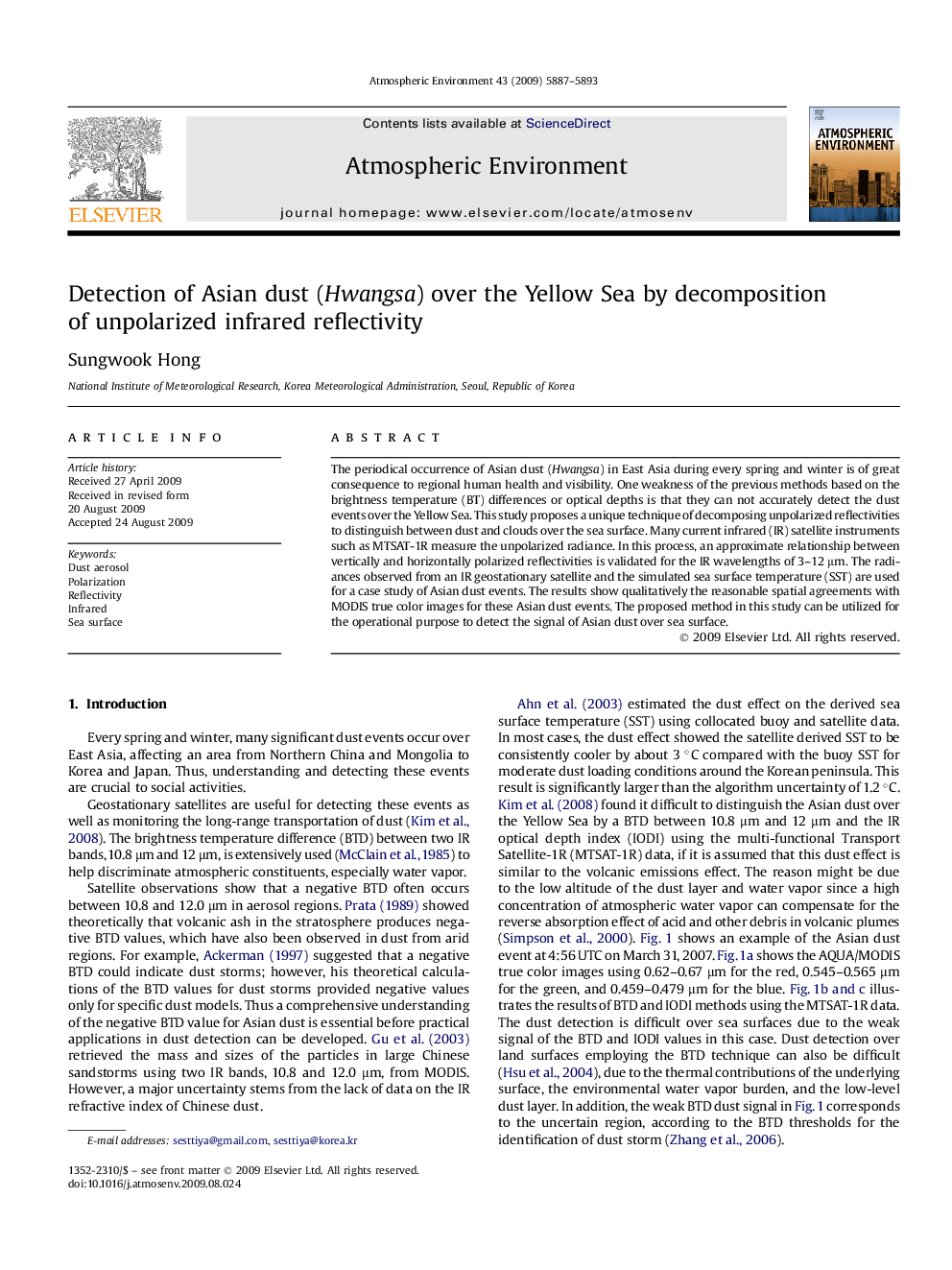| Article ID | Journal | Published Year | Pages | File Type |
|---|---|---|---|---|
| 4441433 | Atmospheric Environment | 2009 | 7 Pages |
The periodical occurrence of Asian dust (Hwangsa) in East Asia during every spring and winter is of great consequence to regional human health and visibility. One weakness of the previous methods based on the brightness temperature (BT) differences or optical depths is that they can not accurately detect the dust events over the Yellow Sea. This study proposes a unique technique of decomposing unpolarized reflectivities to distinguish between dust and clouds over the sea surface. Many current infrared (IR) satellite instruments such as MTSAT-1R measure the unpolarized radiance. In this process, an approximate relationship between vertically and horizontally polarized reflectivities is validated for the IR wavelengths of 3–12 μm. The radiances observed from an IR geostationary satellite and the simulated sea surface temperature (SST) are used for a case study of Asian dust events. The results show qualitatively the reasonable spatial agreements with MODIS true color images for these Asian dust events. The proposed method in this study can be utilized for the operational purpose to detect the signal of Asian dust over sea surface.
